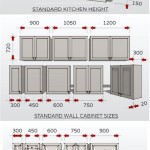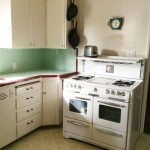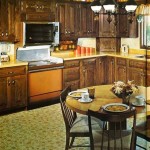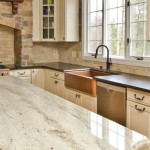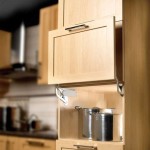DIY Sanding and Painting Kitchen Cabinets: A Comprehensive Guide
Refinishing kitchen cabinets through sanding and painting is a cost-effective way to revitalize a kitchen's aesthetic without the expense of a complete remodel. The process involves methodical preparation, careful execution, and attention to detail to achieve a professional-looking finish. Understanding the necessary steps and materials is crucial for a successful DIY project.
Key Point 1: Preparation and Material Gathering
The initial phase of sanding and painting kitchen cabinets is centered on meticulous preparation. This stage lays the groundwork for a smooth and durable finish. A comprehensive approach to preparation minimizes errors and ensures optimal paint adhesion.
The first step in preparing the cabinets involves removing all doors and drawers. Each component should be labeled clearly, either with numbered stickers or a marking system, to ensure easy reassembly. Hinges, knobs, pulls, and any other hardware must be detached and stored in labeled containers. This prevents loss and streamlines the sanding and painting process.
Thorough cleaning of the cabinet surfaces is paramount. Grease, grime, and food residue impede paint adhesion and can compromise the final result. A degreasing cleaner specifically designed for kitchen surfaces should be used, followed by a rinse with clean water. Ensure the surfaces are completely dry before proceeding to the next step.
Adequate workspace preparation is also essential. The work area needs to be well-ventilated and protected from dust and debris. Covering the floor with drop cloths or plastic sheeting prevents paint spills and facilitates cleanup. Similarly, surrounding surfaces should be masked off with painter's tape to avoid unwanted paint overspray.
Gathering the necessary materials and tools is a critical component of the preparation stage. This includes:
- Sandpaper: A range of grits is required, typically starting with 120-grit for initial sanding, followed by 220-grit for smoothing, and possibly 320-grit for ultra-fine finishing between coats.
- Sanding Block or Orbital Sander: Manually sanding with a block allows for greater control in detail work, while an orbital sander speeds up the process for larger, flat surfaces.
- Tack Cloth: This is a sticky cloth used to remove sanding dust from surfaces before priming and painting.
- Primer: An oil-based or water-based primer is essential for creating a uniform surface and promoting paint adhesion, especially on previously finished surfaces.
- Paint: High-quality acrylic latex paint specifically formulated for cabinets is recommended for durability and ease of cleaning. Consider a semi-gloss or satin finish for optimal appearance and resilience.
- Paintbrushes and Rollers: High-quality brushes with synthetic bristles are ideal for achieving a smooth, even finish. Foam rollers are also suitable for applying paint to larger, flat surfaces.
- Paint Tray: This provides a convenient reservoir for paint and allows for even distribution onto the roller.
- Painter's Tape: Used for masking off areas to protect them from paint.
- Wood Filler (Optional): For filling in any dents, cracks, or imperfections in the cabinet surfaces.
- Safety Glasses and Dust Mask: To protect eyes and lungs from sanding dust and paint fumes.
Having all the necessary materials readily available streamlines the process and minimizes interruptions during the sanding and painting phases.
Key Point 2: The Sanding Process and Surface Preparation
Sanding is a critical step in preparing kitchen cabinets for painting. It creates a slightly textured surface that allows the primer and paint to adhere properly, resulting in a durable and long-lasting finish. The specific sanding technique and level of aggression depend on the existing finish and the type of material the cabinets are made of.
For cabinets with a glossy or heavily varnished finish, a more aggressive sanding approach is necessary. Begin with 120-grit sandpaper to remove the top layer of the finish and create a key for the primer to grip. Apply consistent pressure and work in the direction of the wood grain (if applicable) to avoid scratching or damaging the surface. An orbital sander can be particularly useful for this initial sanding, especially on larger cabinet doors and panels.
Once the initial layer of finish has been removed, switch to 220-grit sandpaper to smooth out the surface and remove any remaining imperfections. This step is crucial for creating a uniform base for the primer and paint. Pay particular attention to edges and corners, as these areas are more prone to chipping and peeling. Hand-sanding with a sanding block is often preferable in these areas to maintain control and avoid over-sanding.
Cabinets with a less glossy or already somewhat matte finish may require less aggressive sanding. Starting directly with 220-grit sandpaper may be sufficient to create the necessary surface texture. The key is to lightly scuff the existing finish without completely removing it. This provides adequate adhesion for the primer without excessively thinning the cabinet's veneer or damaging the underlying material.
After each sanding stage, it is essential to thoroughly remove all dust particles. A vacuum cleaner with a brush attachment is effective for removing loose dust, followed by a tack cloth to pick up any remaining residue. The tack cloth should be used lightly and in a single direction to avoid smearing the dust back onto the surface.
If any dents, cracks, or imperfections are present in the cabinet surfaces, wood filler should be applied after the initial sanding. Use a putty knife to apply the filler smoothly and evenly, ensuring that it fills the imperfections completely. Allow the filler to dry completely according to the manufacturer's instructions, and then sand it smooth with 220-grit sandpaper, blending it seamlessly with the surrounding surface.
Once the sanding is complete and the surfaces are clean and smooth, it is time to apply the primer. A high-quality primer is essential for blocking stains, preventing bleed-through from the existing finish, and providing a uniform surface for the paint. Choose a primer that is compatible with the type of paint being used, either oil-based or water-based.
Apply the primer in thin, even coats using a paintbrush or roller, following the manufacturer's instructions. Allow the primer to dry completely before applying the paint. Depending on the primer and the existing finish, multiple coats of primer may be necessary to achieve optimal coverage and adhesion. Lightly sand the primed surface with 320-grit sandpaper before applying the paint to further enhance the smoothness of the finish.
Key Point 3: Painting Techniques and Achieving a Professional Finish
The painting stage is where the quality of the preparation becomes most apparent. Achieving a professional finish involves employing proper painting techniques, using high-quality materials, and maintaining attention to detail throughout the process.
Selecting the right type of paint is crucial for achieving a durable and aesthetically pleasing finish. Acrylic latex paint specifically formulated for cabinets is generally recommended. This type of paint offers excellent adhesion, durability, and resistance to chipping and scratching. Choose a semi-gloss or satin finish for optimal appearance and ease of cleaning. Avoid flat or matte finishes, as they tend to be more difficult to clean and less resistant to wear and tear.
Before beginning the painting process, ensure the workspace is well-ventilated and free from dust. Apply painter's tape to any areas that need to be protected from paint, such as walls, countertops, or trim. Consider using a paint extender, especially in warmer or drier climates, to slow down the drying time and allow the paint to level out more smoothly, minimizing brushstrokes and roller marks.
Apply the paint in thin, even coats using a high-quality brush or roller. Avoid applying too much paint at once, as this can lead to drips, runs, and uneven coverage. For brushwork, use long, smooth strokes in the direction of the wood grain (if applicable). For rollers, use a light touch and overlap each pass slightly to ensure complete coverage. Allow each coat of paint to dry completely according to the manufacturer's instructions before applying the next coat.
Sanding lightly between coats of paint can further enhance the smoothness of the finish. Use 320-grit sandpaper to gently scuff the surface after each coat has dried. This removes any imperfections and creates a better surface for the subsequent coat to adhere to. Be sure to remove all sanding dust with a tack cloth before applying the next coat of paint.
Two to three coats of paint are typically necessary to achieve full coverage and a uniform color. After the final coat has dried completely, carefully remove the painter's tape. Use a utility knife to score along the edge of the tape before peeling it off to prevent the paint from chipping or peeling. Inspect the finished cabinets for any imperfections, such as drips, runs, or missed spots, and touch them up as needed with a small brush.
Once the paint has fully cured, reattach the hardware, hinges, and doors and drawers. Ensure that the labeled components are reassembled in their original positions. Adjust the hinges as necessary to ensure that the doors and drawers open and close smoothly and evenly. Clean the finished cabinets with a mild detergent and water to remove any dust or fingerprints. Avoid using harsh chemicals or abrasive cleaners, as these can damage the painted finish.
Patience and attention to detail are key to achieving a professional-looking finish when painting kitchen cabinets. By following these techniques and using high-quality materials, it is possible to transform the look of a kitchen and add value to a home without the expense of a complete remodel.

How To Paint Kitchen Cabinets A Step By Guide Confessions Of Serial Do It Yourselfer

How To Paint Kitchen Cabinets In 7 Simple Steps

Avoid These Mistakes How To Paint Cabinets That Are Already Painted Grace In My Space

The Average Diy Girl S Guide To Painting Cabinets

How To Paint Kitchen Cabinets Without Sanding Or Priming

Painting Kitchen Cabinets With Chalk Paint Simply Today Life

How To Paint Veneer Cabinets For A Long Lasting Finish Anika S Diy Life

How To Paint Fake Wood Kitchen Cabinets Simple Made Pretty 2024

How To Paint Kitchen Cabinets Without Sanding The Budget Decorator

Step By How To Paint Kitchen Cabinets Like A Pro And On Budget The American Patriette

